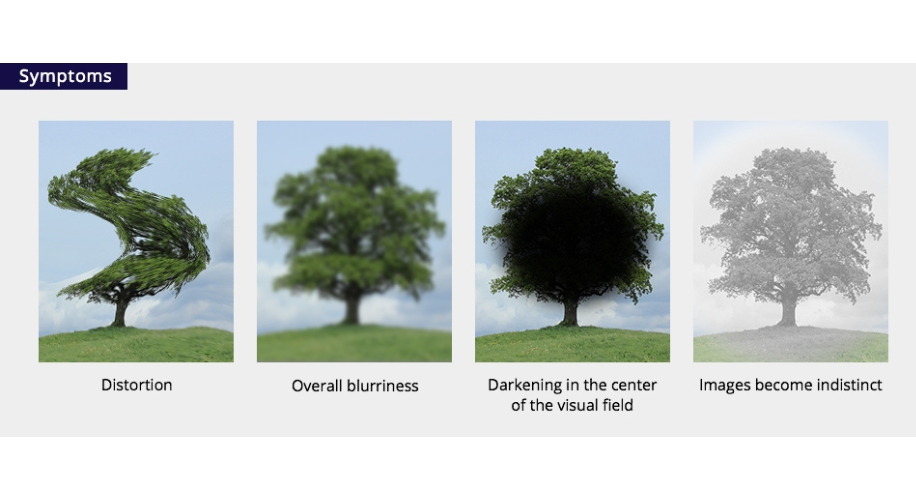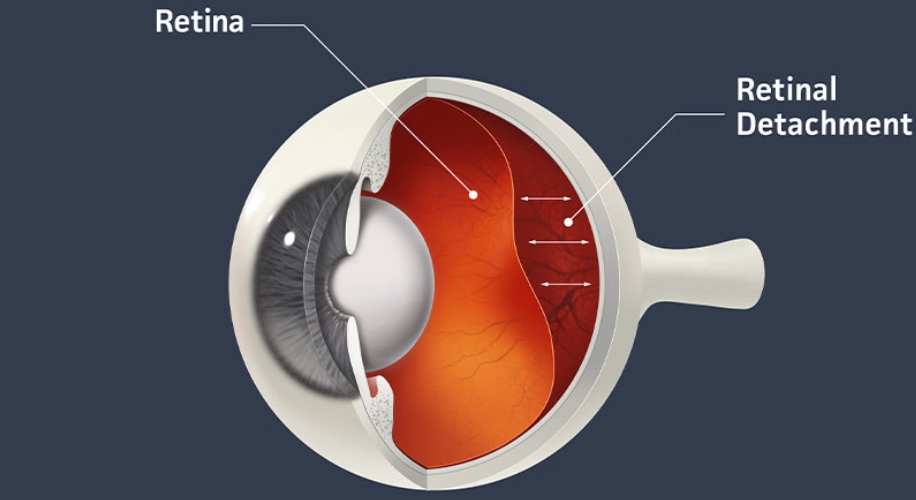Understanding Visual Field Loss: Common Causes
Visual field loss refers to the partial or complete loss of vision in specific areas of your vision. This can show up as absolute loss, such as a blacking out of part of your vision, or decreased sensitivity. Various eye conditions and diseases can lead to visual field defects, affecting different parts of the field of view.
Important Note: If you notice any of these changes to your vision, make sure you consult your eye care provider immediately.
1. Macular Degeneration: Central Vision Loss
Macular degeneration is a progressive eye condition that affects the macula, the central part of the retina responsible for sharp, detailed vision. In age-related macular degeneration (AMD), the macula has an accumulation of deposits and deteriorates over time, leading to central vision loss or distortion. This results in difficulty seeing fine details, reading, and recognizing faces.

Photo from Healios
2. Glaucoma: Peripheral or Side Vision Loss
Glaucoma is a group of eye conditions characterized by damage to the optic nerve, often associated with elevated intraocular pressure (IOP). One of the primary manifestations of glaucoma is peripheral vision loss, where the visual field gradually narrows from the sides towards the center, sometimes referred to as tunnel vision. However, depending on the type and severity of glaucoma, vision loss can also affect the mid-peripheral or central areas. The mechanism involves progressive damage to the optic nerve fibers, leading to gradual visual field constriction.

Photo from the American Optometric Association
3. Retinal Detachment
Retinal detachments occur when the retina separates from the underlying tissue, disrupting its blood supply and causing vision loss. Depending on the location and extent of detachment, visual field defects can vary. A detached retina may cause sudden flashes of light, floaters, or a shadow or curtain-like effect in parts of your vision. If given immediate attention, many of these cases are treatable, thus a timely exam is imperative.

Photo from the American Optometric Association
4. Tumors and Neurological Disease
Tumors, as well as neurological diseases affecting the visual pathways, can also result in visual field loss. Tumors can directly compress or damage the optic nerve or other visual structures, leading to visual field defects. For example, a pituitary tumor grows at the optic chiasm where the signals from each eye meet and can cause visual field defects on the temporal, or outside parts of your vision. Neurological conditions such as strokes, multiple sclerosis, or brain tumors can affect the visual pathways from the eyes to the brain, resulting in various patterns of visual field loss.

Photo from Pexels by cottonbro studio
Understanding the underlying causes and mechanisms of visual field loss is crucial for early detection, diagnosis, and management of eye conditions and diseases. Regular comprehensive eye exams, including visual field testing, are essential for detecting and monitoring changes in the visual field, allowing for timely intervention and preservation of vision. If you experience any changes in your vision or notice visual field defects, consult with an eye care professional for evaluation and appropriate management immediately.



 United States
United States